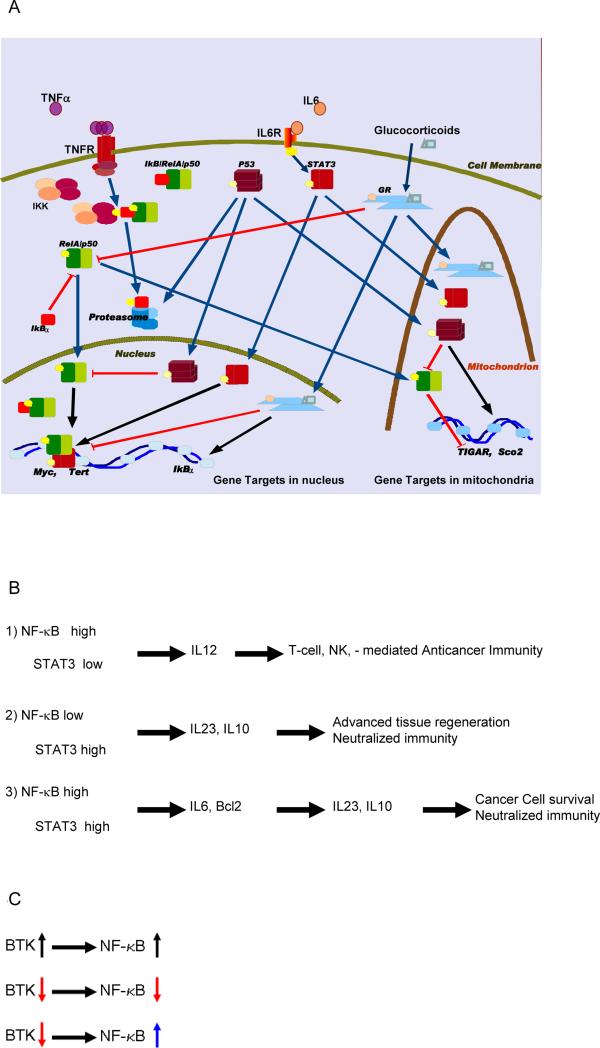Fig.3.
A: A simplified, schematic depiction of three representative signal pathways with proven potential to interact with intracellular signal relay mechanisms regulated by NF-κB. B: STAT3 and NF-κB induce unique combinations of gene cohorts with an activity profile that can distinguish subgroups of malignant cells. C: A model drug (red arrow) that inhibits a tyrosine kinase involved in NF-κB activation (here Bruton tyrosine kinase “BTK”), will fail to work when NF-κB is constitutively active (blue arrow), and can thereby saturate regulatory sequences (promoters and enhancers) of its oncogenic targets.

